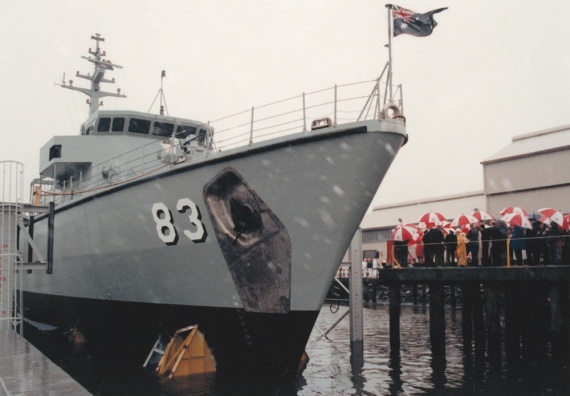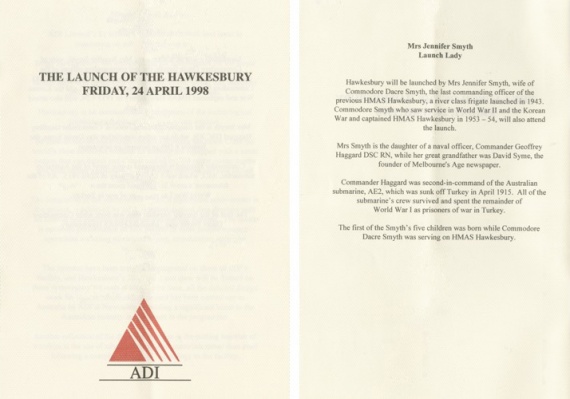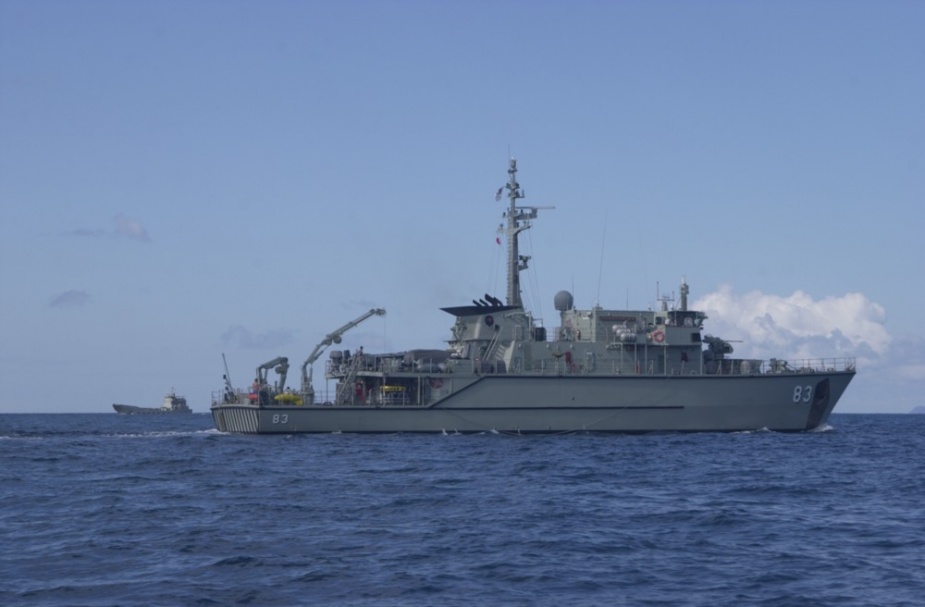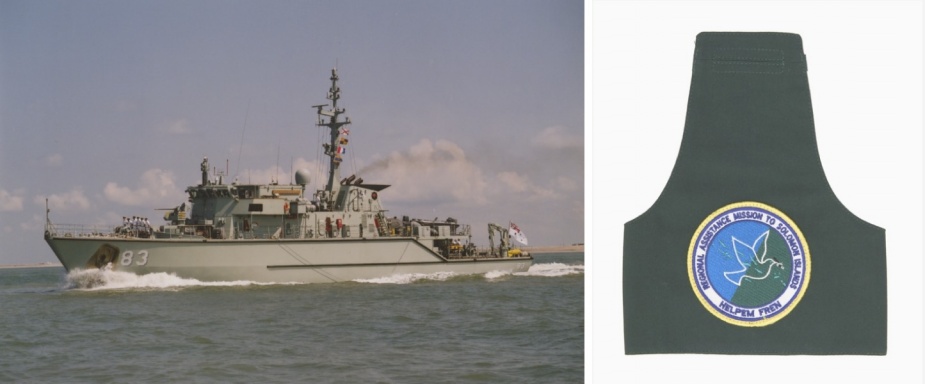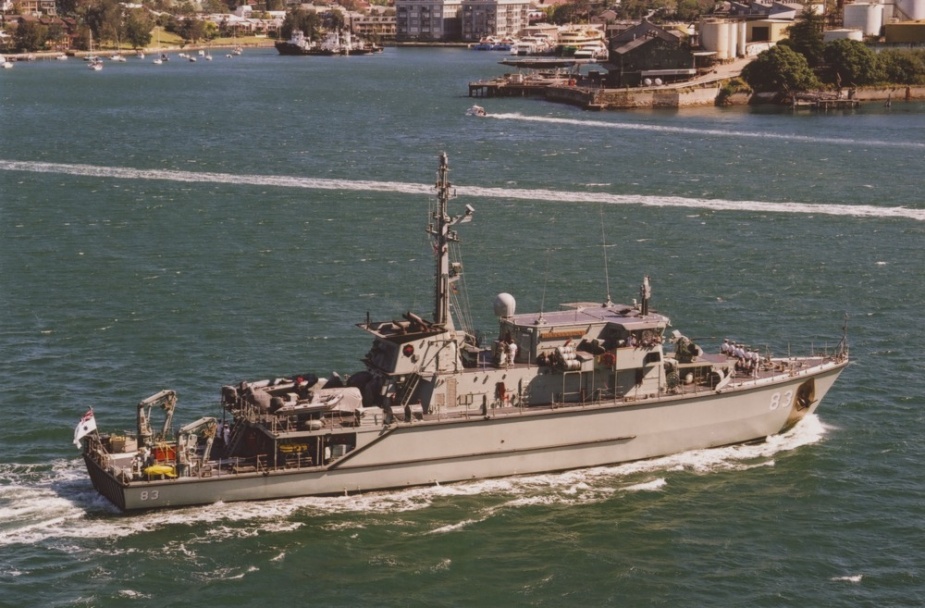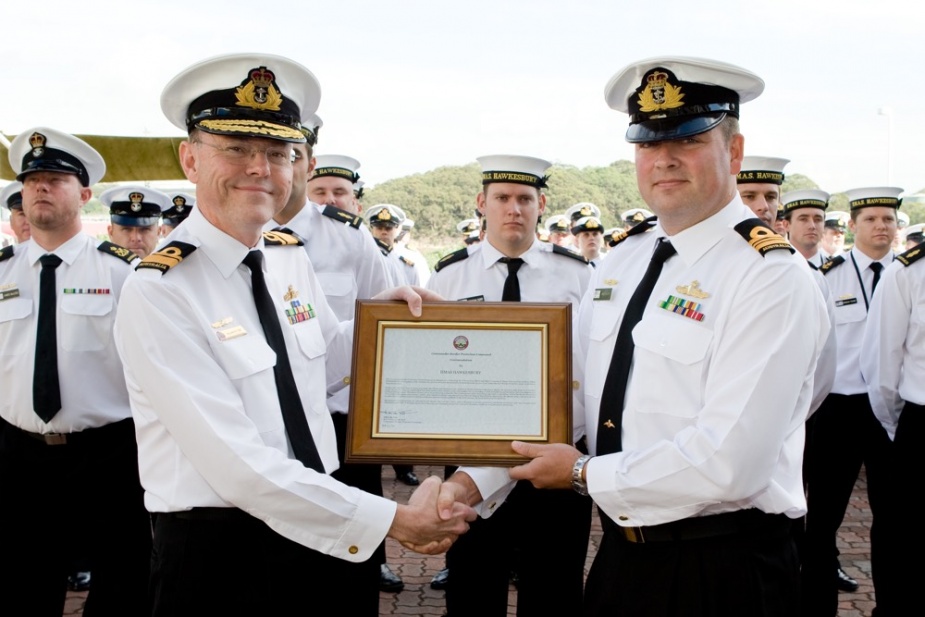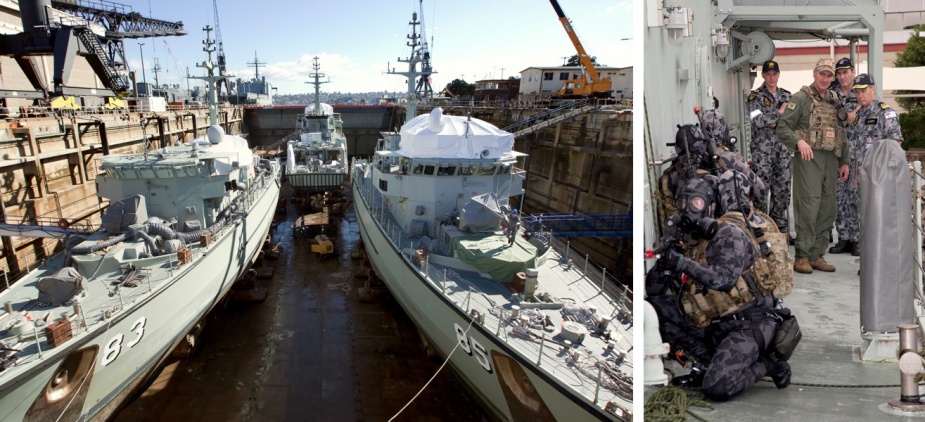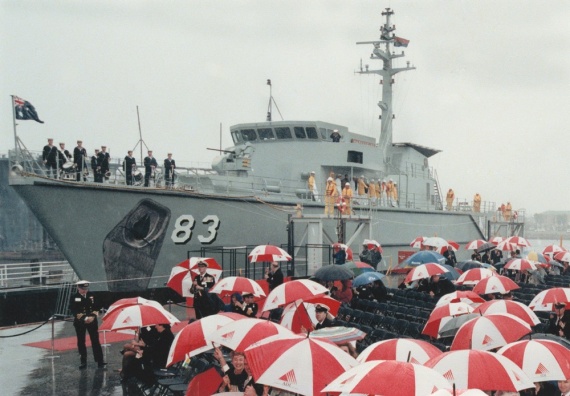
HMAS Hawkesbury (II) was the second of six Huon Class minehunter coastal (MHC) vessels built for the Royal Australian Navy by Australian Defence Industries (ADI), Newcastle. The Huon Class was the most advanced of its type in the world. Like her sister ships Hawkesbury was made of fibre reinforced plastic and had a unique single skin solid hull that had no ribs or frames, providing high underwater shock resistance, and very low magnetic and noise levels. This hull was designed to flex inwards if an undersea explosion occurred nearby. All machinery and equipment was mounted on cradles or suspended from bulkheads to further enhance resistance to shock damage and protect ship systems.
She was launched on 24 April 1998 by Mrs Jennifer Smyth, the wife of Commodore Dacre Smyth AO, RAN, a former Commanding Officer of HMAS Hawkesbury (I). Following sea trials that included a series of carefully controlled underwater explosions to prove her ability to withstand shocks associated with mine clearance operations, Hawkesbury commissioned into the RAN under the command of Lieutenant Commander Steve McCarey, RAN, at HMAS Waterhen on 12 February 2000 with cadets from TS Hawkesbury involved in the ceremony. Following a brief period of sea checks, mine hunting exercises began in March. Following just a year of operational service Hawkesbury was awarded the Kelly Shield for small ship efficiency in 2001.
Hawkesbury was a regular participant in fleet exercises in the first few years of her commission and took part in; a Fleet Concentration Period and Exercise HUNTER in 2000; Exercise TANDEM THRUST and a Minor War Vessel Concentration Period in 2001; Exercises MULGOGGER and DUGONG in 2002; Exercises MULGOGGER, TALISMAN SABRE and DUGONG in 2005; and Exercises OCEAN PROTECTOR and MULGOGGER in 2006. She also conducted surveillance operations around the Bass Strait oil rigs in support of Operation ESTES.
Specifications
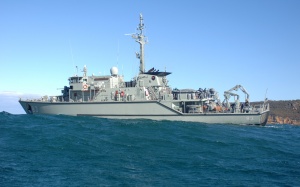 |
| Class |
Huon Class |
|---|---|
| Type |
Minehunter Coastal (MHC) |
| Role | Mine Warfare |
| Pennant |
M83 |
| International Callsign |
VLTD |
| Motto |
Equality Not Servitude |
| Builder |
ADI Newcastle |
| Launched |
24 April 1998 |
| Launched by |
Mrs Jennifer Smyth, wife of Commodore Dacre Smyth, the last Commanding Officer of the previous HMAS Hawkesbury, a River Class frigate |
| Commissioned |
12 February 2000 |
| Decommissioned |
31 October 2018 |
| Dimensions & Displacement | |
| Displacement | 732 tonnes |
| Length | 52.5 metres |
| Beam | 9.9 metres |
| Draught | 3 metres |
| Performance | |
| Speed | 14 knots |
| Range | 1600 nautical miles |
| Complement | |
| Crew | 46 |
| Propulsion | |
| Machinery |
|
| Armament | |
| Guns | 1 x MSI DS 30B 30mm |
| Physical Countermeasures |
|
| Electronic Countermeasures | AWADI Prism |
| Radars | Kelvin Hughes 1007 |
| Sonars | GEC-Marconi Type 2093 |
| Combat Data Systems | GEC-Marconi Nautis 2M |
| Weapon Control Systems | Radamec 1400N optronic surveillance system |
| Awards | |
| Inherited Battle Honours |
|
| Resources | |
| Image Gallery |
HMAS Hawkesbury (II) |
